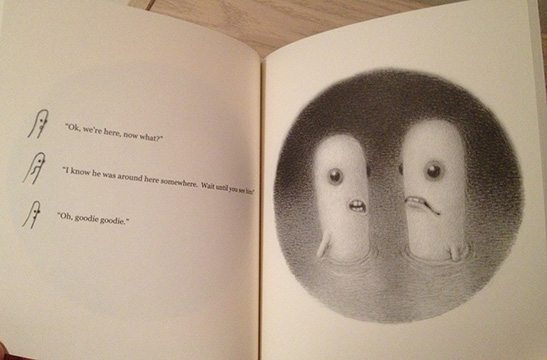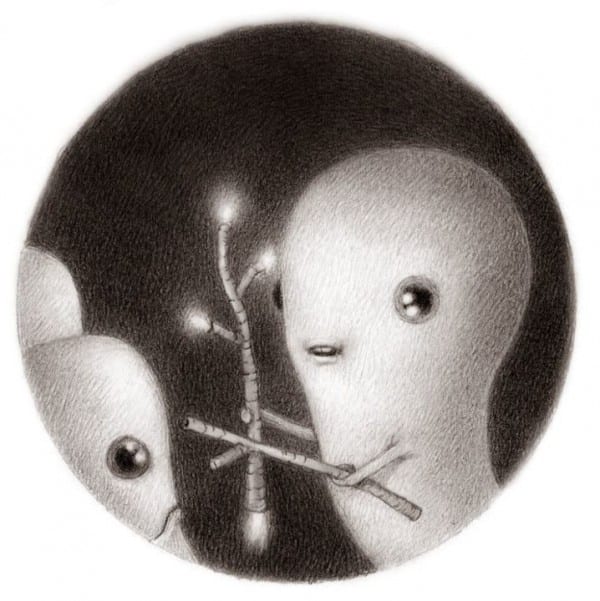Rina Ayuyang's Yam Books publishing imprint is an interesting example of the kind of micropublisher that's emerged in the past three years. Some micropublishers, like say Oily Comics or Retrofit, tend to release minicomics or general short-form works. Such comics are relatively cheap and easy to publish, especially if the publisher controls the means of production with a risograph or tabletop printing press. It's a way of publishing without assuming too much financial risk, and it allows a publisher to keep a fairly prolific release schedule, often by selling subscriptions. Yam Books uses a more traditional model, one where Ayuyang is mostly publishing actual books through a printer and assuming a greater risk. Of course, she compensates for this risk by releasing a relatively small number of books each year. What's especially interesting is that the artists on her roster have published extensively elsewhere but have projects that fell through the cracks at other publishers—or perhaps they wanted a more concentrated push from a smaller publisher.
One of those artists is Renee French, who's been published by Fantagraphics, Top Shelf, PictureBox, Sparkplug Comic Books, Oni Press, Dark Horse, Toon Books, and Atheneum. Whether she does comics for a general audience, for children, or in collaboration with a writer, every one of her works is unsettling in ways that are difficult to immediately identify. Working with a small publisher like Yam Books undoubtedly meant that French could create exactly the kind of book she wanted. As anyone who read Tim Hensley's Ticket Stub could tell you, Ayuyang spares no expense in terms of design, no matter how odd the request. In the case of her newest book, Hagelbarger and That Nightmare Goat, French has created an object that defies easy categorization.
It has the cadence of a children's book as opposed to a comic. The left-hand side of the page has text, and the right-hand pages have wordless images. The story's main protagonist is an amorphous blob creature named Hagelbarger, who spends his day building nests for creatures both above and below water. He gives a special stick teeming with benign, luminescent swimming creatures to some underwater snakes in their nest. French quickly establishes Hagelbarger as a positive force who derives satisfaction from creating and helping others. The book's looming, monstrous presence is That Nightmare Goat. The odd use of "that" as a demonstrative adjective here conjures up more wholesome associations like That Darn Cat or That Girl, but the protruding, dangling tongue of the Goat is somewhere between obscene and simply disturbing. That Nightmare Goat's dead, glassy eyes belie its status as a wisecracking, profane character who nonetheless is a ruthless predator. Meanwhile, Hagelbarger and his friends Hap and Tiffo are cute but also faintly unsettling, as they don't fit into any status of creature I've ever seen. They are simply oblong, bulbous creatures with bulging eyes and teeth that are drawn with a level of naturalistic detail that make them look strange and unpleasant in comparison to the smooth, white and non-threatening nature of the way things are drawn early in the book.
Unlike in some of her books, dialogue is an important element of this work. French solves the problem of how to dynamically depict dialogue with this book's design by having bizarre little icons representing various characters pop up to the left of each line of dialogue, creating a sense of sequential narrative connected to the larger image. It also (perhaps) inadvertently allows French to work in a loose and sketchy style in half of the book, as she did in Micrographica, while still retaining the atmosphere that her more detailed, labored drawings generate. It also frees her up to make That Nightmare Goat a screamingly funny character, as it belligerently insults everyone around it while goading them to lighten up and take a joke. When Hagelbarger declines to give the stick to the Goat, he has to add, "Could you please stop licking me?" The response he gets: "Aw, c'mon, you know you like it." The first thing it says to Hap and Tiffo is, "Well, aren't you a couple of handsome assholes." Aware of its own frightful status, it introduces itself to Hagelbarger as "That...Regular Goat."
The use of graphic language and occasional violence obviously precludes this from being a children's book, even if its rhythms and the nature of its story fit a common structure for that form. It's not quite a fairy tale or fantasy book, especially since there are no lessons to be learned. Indeed, while the Goat is thwarted in the end, it still manages to chew the arm off one of the protagonists and wears it proudly around its neck. However, the book is far too whimsical and funny to be considered horror in the same sense of French's more extreme earlier comics. If anything, the pervasive feelings of anxiety and dread that permeate her books and her drawing style are played for uncomfortable laughs. That Nightmare Goat wants you to learn to take a joke even as it aims to have you for dinner, and French suggests that this is not such a bad idea. If her book H Day was about externalizing her own sensation of pain, and The Ticking was about the difficulty of self-expression in the face of a brutally judgmental world, then Hagelbarger and That Nightmare Goat is about the ways in which beauty, kindness, cruelty, humor, and horror can all share the same space. French has a way of seeing the world and translating it onto the page that externalizes the inner ugliness of her characters while still allowing that sense of the grotesque to be playful, amusing and even benevolent.










